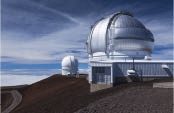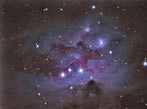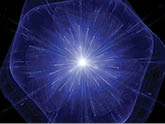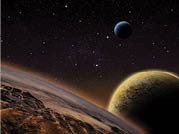Return to May/June 2015 articles.


We live in an age of incredible advances in science and technology. As I watch children doing amazing things with their phones and computers, I am reminded of how things were when I was a kid. I remember seeing my first television set at an “Electricity in the Future” display at the Indiana State Fair in Indianapolis in 1946. The six-inch picture tube flickered and jumped around, but that black and white image was amazing to me and to the hundreds of other people who saw this technology being introduced. I also remember the first time that I used a telephone that was not a party line. As a child, all the phones in the neighborhood were on the same line. When you talked to someone on the phone, everyone in the neighborhood could listen in and even make comments. I make those kind of remarks now in the presence of my grandchildren, and they think I am just making up stories.
The implications of the rapid change in technology have also had a huge impact on science. One science that has seen a rapid growth of factual information is astronomy. I have been a witness to much of that change as well, because as a science teacher I was always interested in what we understood about space. I saw Sputnik from my back yard as a teenager. As a science major in college and as a pilot teacher in the Earth Science Curriculum Project I took large numbers of classes supported by the National Science Foundation. Those classes brought us up to date on the latest advances in space and provided us with techniques to teach these exciting new discoveries to our students.
Today astronomy is still expanding its horizons. We now have instruments that can see much farther into space with much greater clarity than we could even ten years ago. New telescopes have been constructed all over the earth, and special telescopes exist that “see” in different parts of the spectrum than what we could observe in the past. Ultraviolet, infrared, X-ray, radio waves of all wavelengths, and even devices that “see” neutrinos and quarks are now either in operation or under development. We are now looking at other solar systems orbiting stars far away from our Sun and its set of planets. We are able now to see objects much farther away than we ever could before because we have telescopes that gather much more light than those of the past. I recently heard an astronomer at a conference tell his audience that if someone standing on the surface of a moon of Mars lit a light equivalent to a match, our telescopes could see it from our vantage point on earth. Some of the light we are seeing is so far away that it left its source at a time very close to the creation of the cosmos.
of all wavelengths, and even devices that “see” neutrinos and quarks are now either in operation or under development. We are now looking at other solar systems orbiting stars far away from our Sun and its set of planets. We are able now to see objects much farther away than we ever could before because we have telescopes that gather much more light than those of the past. I recently heard an astronomer at a conference tell his audience that if someone standing on the surface of a moon of Mars lit a light equivalent to a match, our telescopes could see it from our vantage point on earth. Some of the light we are seeing is so far away that it left its source at a time very close to the creation of the cosmos.
What is amazing about all of this advancement in astronomy is that all this growth has added to the volume of evidence that God is the creator and the sustainer of the universe. The media tends to project all of this advancement as a threat to faith. Programs like the recent Cosmos series with Neil deGrasse Tyson devote a great deal of time to showing that historically, religious people were very wrong in their understandings about the creation and in some cases may have impeded science by their religious misunderstandings.
The Roman Catholic church is frequently vilified in this regard, and the incident with Galileo is well publicized as a demonstration of what is wrong with religion. In reality, there were some moral issues involved in Galileo's situation that were more of a concern to the religious leaders of the day than his scientific views. But even in moral issues religion can be wrong. It is not what a denomination believes or teaches that is the issue in asking whether God is the creator of the cosmos. The question is what the evidence shows, not what philosophers and theologians believe. The Roman Catholic church has changed its position on science and faith enormously in the last century. In 1950, Pope Pius XII proclaimed that there was no opposition between evolution and Catholic doctrine, and in 1996 Pope John Paul II repeated and endorsed that view.
In October 2014, Pope Francis issued a position paper that showed a good understanding of the relationship between science and faith in the twenty-first century. The Pope said, “When we read about creation in Genesis, we run the risk of imagining God was a magician, with a magic wand able to do everything. But that is not so.” He went on to say that the beginning of the world was not a “work of chaos” and that “God is not … a magician, but the Creator who brought everything to life” (huffingtonpost.com/religion/2014/10/27/pope-francis-evolution_n_6057378.html).
What the new astronomy is telling us is how much greater, wiser, and more intelligent God has been in his creation of our world than we ever imagined. Here are a few of the new understandings that we have gained in recent years:
THE CREATION IS EVEN GREATER THAN WE
IMAGINED IN SIZE AND IN ENERGY.
The size of the cosmos staggers the imagination. Right now, our measurements tell us that the distance from the earth to the edge of space is 14,000,000,000 light years. If you could travel at the speed of light, it would take 14 billion years to get to the edge of the creation, and by that time it would have expanded much further out. To translate that into miles would involve multiplying the speed of light (186,000 miles per second) by the number of seconds in 47 billion years.
 In addition to telling us about the incredible size of the creation, we now know that the energy involved in the creation is massively beyond anything we imagined. In the old astronomy, we would calculate the energy in the creation by multiplying the amount of matter in the cosmos by the speed of light squared using Einstein's famous equation E = mc2. We now know that this figure would only be about 4.5% of the actual energy in the creation. That is because 95.5% of the energy of the creation is involved in dark matter and dark energy that we did not even know existed 50 years ago.
In addition to telling us about the incredible size of the creation, we now know that the energy involved in the creation is massively beyond anything we imagined. In the old astronomy, we would calculate the energy in the creation by multiplying the amount of matter in the cosmos by the speed of light squared using Einstein's famous equation E = mc2. We now know that this figure would only be about 4.5% of the actual energy in the creation. That is because 95.5% of the energy of the creation is involved in dark matter and dark energy that we did not even know existed 50 years ago.
It is impossible for the human mind to completely grasp the size and amount of energy in the creation, and yet all explanations of the creation have to be able to embrace both features. Whatever your concept of God was when you were a child, it should now be massively larger and grander today. Modern astronomy has added a whole new dimension to “The heavens declare the glory of God; the skies proclaim the work of his hands.”
THE COMPLEXITY OF CREATION IS FAR GREATER
THAN WE EVER DREAMED IT COULD BE.

Most of us have heard the title Big Bang used to describe what appears to be the history of the cosmos. Frederick Hoyle invented the term while making fun of the model of the cosmos that researchers were promoting — and the name stuck. The big bang does not tell you what banged or who caused the bang. What it does is describe the pattern of motion and energy change that we see in the cosmos with our newest telescopes.
In March 2014, researchers announced the discovery of gravity waves. This discovery would open the door to uniting quantum  mechanics and gravity into a workable explanation of the process of creation. What all of this is telling us is that before the creation process could even start, there were certain things that had to be in place. Time had to be created and have a particular direction. Space had to be created and with a proper shape. Space could be spherical, saddle-shaped, or flat. Which shape was chosen would radically affect how the creation could function and how long it could last. Space had to be created so that it could expand, and the expansion rate had to be precisely chosen. The evidence is that the entire universe was contained in a point a billionth the size of a nuclear particle. In less than a nanosecond (10-9 seconds) the energy would fill the universe with quarks and in .01 milliseconds the quarks would clump into protons and neutrons. This is the current model of the process of creation based on the evidence available in 2014.
mechanics and gravity into a workable explanation of the process of creation. What all of this is telling us is that before the creation process could even start, there were certain things that had to be in place. Time had to be created and have a particular direction. Space had to be created and with a proper shape. Space could be spherical, saddle-shaped, or flat. Which shape was chosen would radically affect how the creation could function and how long it could last. Space had to be created so that it could expand, and the expansion rate had to be precisely chosen. The evidence is that the entire universe was contained in a point a billionth the size of a nuclear particle. In less than a nanosecond (10-9 seconds) the energy would fill the universe with quarks and in .01 milliseconds the quarks would clump into protons and neutrons. This is the current model of the process of creation based on the evidence available in 2014.
It is highly likely that this model is wrong, or at least incomplete. New evidence will change our understanding in the years ahead — so why even discuss it? A few years ago words like “quarks” and “gravity waves” were unknown. The wisdom and intelligence and power that is necessary to do such a simple thing as producing atoms give us a picture of God as the creator. In Proverbs 8:22 – 23 we find “Wisdom” speaking. Wisdom says, “The Lord possessed me at the beginning of his work, before his deeds of old. I was appointed from eternity [eternity meaning before there was time], from the beginning, before the world began” (ESV, and NIV, 1984). The new astronomy shows us God's amazing wisdom and intelligence as our knowledge grows our appreciation of God as an engineer expands.
THE COSMOS CONTAINS FAR MORE FEATURES THAN
WE THOUGHT THAT HAD TO BE DESIGNED FOR LIFE TO EXIST.
One of the major thrusts of the new astronomy has been to find other planets orbiting stars other than our sun. Our improved technology has now shown us more than 1,800 planets orbiting other stars. This is no surprise to scientists. One of the design features of matter is that it attracts other matter. If two astronauts were floating free in space with no other masses around, they would be drawn together by gravity and would orbit one another if they did not collide. The creation is full of matter, and all of that matter experiences mutual gravitational pull throughout the cosmos. The sun and the moon both pull on the water in our oceans producing a multiplicity of tides depending on the relative positions of the sun, moon, and earth.
What is remarkable about all the exoplanets (planets orbiting stars other than our sun), is that we are seeing how special and extraordinary our earth is. The newspaper articles might suggest in their headlines, that hundreds of “earth-like” planets have been discovered. Every time a planet is found in the “Goldilocks zone” (the zone in which the planet's location would allow water to exist as a liquid) the planet would be identical to the earth. For every star in the creation there is a distance from it that would allow a temperature range between zero and 100 degrees Celsius — the freezing and boiling points of water. That has led some to speculate that there must be billions of planetary systems out there with life like ours.
The fact is that the distance from a star is only one of many variables that must be carefully chosen for life to exist. (Please note that we are talking about carbon-based, oxygen-based life in this discussion. It is virtually impossible for life based on a radically different chemistry to exist, and rock people or fire people violate the definition of what life is.) Our studies of exoplanets  have shown us that having a small, rocky planet large enough to retain an atmosphere is exceedingly rare. Having an orbit that is nearly circular, having a stable star, having a single star instead of a binary or trinary star, having adequate shielding from the dangers of interstellar space, and a variety of other factors are all necessary for life to exist. The unique character of earth is hard to deny and as more and more planets are discovered and studied the evidence of the earth's uniqueness continues to grow. (Let us hasten to add here that we are not suggesting that there is no life in space. If God created it, then it will be there. We are just pointing out that extrasolar planets have added more evidence of how unique our planet is.)
have shown us that having a small, rocky planet large enough to retain an atmosphere is exceedingly rare. Having an orbit that is nearly circular, having a stable star, having a single star instead of a binary or trinary star, having adequate shielding from the dangers of interstellar space, and a variety of other factors are all necessary for life to exist. The unique character of earth is hard to deny and as more and more planets are discovered and studied the evidence of the earth's uniqueness continues to grow. (Let us hasten to add here that we are not suggesting that there is no life in space. If God created it, then it will be there. We are just pointing out that extrasolar planets have added more evidence of how unique our planet is.)
THE NATURE OF GOD AS A BEING
OUTSIDE OF SPACE/TIME IS REAL.
Every time modern astronomers start exploring the meaning of their observations and equations they find themselves encountering evidence of dimensions beyond the three dimensions in which we live. String theory proposes eleven spatial dimensions with 10500 different possible solutions to the equations that describe string theory proposals. Similar results come from studies of the structure of matter and the implications of quantum mechanics.
What is interesting about this is that the Bible has always presented God as a being outside of space/time. Consider this sampling of biblical descriptions of God:
- Jeremiah 23:23 – 24: “Am I only a God nearby,” declares the LORD, “and not a God far away? … Do not I fill heaven and earth?” declares the LORD.
- 2 Chronicles 2:6: “But who is able to build a temple for him, since the heavens, and even the highest heavens, cannot contain him?
- Acts 17:28: ‘For in him we live and move and have our being.’
- John 4:24: “God is Spirit … .”
- Numbers 23:19: “God is not a man, that he should … .”
- Revelation 22:13: “I am the Alpha and Omega, the First and Last, the Beginning and the End”
(All scriptures NIV).
There is a tendency of mankind to visualize God as an old man with the same limitations and problems that we as humans  have. When we put God into a human box and limit him to human abilities and understandings, we make our God too small to explain the creation as we see it. The new astronomy should expand our visualization of God and truly glorify him as the creator. The design features in the creation which allow us to live on this remarkable planet show us other attributes of God. “For since the creation of the world God's invisible qualities — his eternal power and divine nature — have been clearly seen, being understood from what has been made, so that men are without excuse” (Romans 1:20). Sources: Scientific American, October 2014, page 59ff; and National Geographic “Cosmic Questions,” April 2014.
have. When we put God into a human box and limit him to human abilities and understandings, we make our God too small to explain the creation as we see it. The new astronomy should expand our visualization of God and truly glorify him as the creator. The design features in the creation which allow us to live on this remarkable planet show us other attributes of God. “For since the creation of the world God's invisible qualities — his eternal power and divine nature — have been clearly seen, being understood from what has been made, so that men are without excuse” (Romans 1:20). Sources: Scientific American, October 2014, page 59ff; and National Geographic “Cosmic Questions,” April 2014.
Picture credits:
Cover and this page: The Helix Nebula: a Gaseous Envelope Expelled By a Dying Star. http://hubblesite.org/newscenter/archive/releases/2004/32/image/d/. Credit: NASA, ESA, C.R. O'Dell (Vanderbilt University), M. Meixner and P. McCullough (STScI)
© liquid studios. Image from BigStockPhoto.com.
© Willy79. Image from BigStockPhoto.com.
© rwittich. Image from BigStockPhoto.com.
© sakkmesterke. Image from BigStockPhoto.com.
© Keith Tarrier. Image from BigStockPhoto.com.
© SurangaWeeratunga. Image from BigStockPhoto.com.
